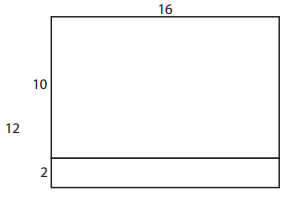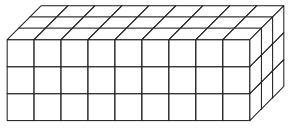Students looking for the Bridges in Mathematics Grade 5 Home Connections Answer Key Unit 1 Module 1 can find a better approach to solve the problems.
Bridges in Mathematics Grade 5 Home Connections Answer Key Unit 1 Module 1
Bridges in Mathematics Grade 5 Home Connections Unit 1 Module 1 Session 2 Answer Key
What’s the Problem?
ex To find 3 times any number, Maria doubles the number, then adds the number again.
a. Write an expression with parentheses to show how Maria would solve 3 × 6.
(2 × 6) + 6
Answer:
3 × 6 = 18
(2 × 6) + 6 = 12 + 6 = 18
b. What is 3 × 6?
Answer:
By multiplying 3 by 6 we get 18.
c. What is another way to think about 3 × 6?
You could do 3 × 5, which is really easy, and then add 3 more, like this (3 × 5) + 3
Answer:
3 × 6 can be written as 3 × (5 + 1)
3 × 5 + 3 × 1
= 15 + 3
= 18
Question 1.
To find 4 times any number, Susan uses the Double-Double strategy (multiply by 2, then by 2 again). Susan wrote (2 × 9) × 2 to record how she would solve 4 × 9.
a. What is 4 × 9?
Answer:
4 × 9 = 36
By multiplying 9 by 4 we get 36.
b. What is another way to solve 4 × 9?
Answer:
4 × 9 can be written as 4 × (10 – 1)
(4 × 10) – (4 × 1)
= 40 – 4
= 36
So, 4 × 9 = 36
Question 2.
To find 5 times any number, Kaylee first multiplies by 10 and then finds half the product.
a. Write an expression with parentheses to show how Kaylee would solve 7 × 5.
Answer:
7 × 5 = (5 + 2) × 5
5 × 5 + 2 × 5
25 + 10 = 34
b. What is 7 × 5?
Answer:
7 × 5 = 35
By multiplying 7 by 5 we get 35.
c. What is another way to solve 7 × 5?
Answer:
7 × 5 can be written as (10 – 3) × 5
10 × 5 – 3 × 5
50 – 15 = 35
By multiplying 7 by 5 we get 35.
Question 3.
When given any number times 9, Jasper multiplies the number by 10 and then removes one group of the number.
a. Write an expression with parentheses to show how Jasper would solve 3 × 9.
Answer:
Jasper would solve 3 × 9
3 × (10 – 1)
3 × 10 – 3 × 1
30 – 3 = 27
b. What is 3 × 9?
Answer:
3 × 9 = 27
By multiplying 9 by 3 we get 27
c. What is another way to think about 3 × 9?
Answer:
We can find the product 3 and 9 as 9 + 9 + 9 = 27 (repeated addition).
Question 4.
Braden loves multiplying by 8 because he can double-double-double.
a. Write an expression with parentheses to show how Braden would solve 8 × 7.
Answer:
Braden would solve 8 × 7
(4 + 4) × 7
(4 × 7) + (4 × 7)
= 28 + 28 = 56
b. What is 8 × 7?
Answer:
8 × 7 = 56
By multiplying 8 by 7 we get 56.
c. What is another way to think about 8 × 7?
Answer:
8 × 7 can be written as (10 – 2) × 7
10 × 7 – (2 × 7)
= 70 – 14
= 56
Question 5.
Jonah was asked to add 4 and 7 then multiply the sum by 9. Which expression shows Jonah’s problem? (The sum is the answer to an addition problem.)
a. (4 + 7) × 9
Answer:
(4 + 7) × 9
= 11 × 9
= 99
b. (7 – 4) × 9
Answer:
(7 – 4) × 9
3 × 9 = 27
c. 4 + (7 × 9)
Answer:
4 + (7 × 9)
4 + 63
= 67
Option a is the suitable answer.
Question 6.
Patrick needed to multiply 4 and 6 then subtract 12 from the product. Write an expression with parentheses to show the problem. (The product is the answer to a multiplication problem.)
Answer:
Patrick needed to multiply 4 and 6 then subtract 12 from the product.
(4 × 6) – 12
24 – 12 = 12
Question 7.
Violet divided 81 by 9 then multiplied the quotient by 3. Write an expression with parentheses to show the problem. (The quotient is the answer to a division problem.)
Answer:
Violet divided 81 by 9 then multiplied the quotient by 3
81 ÷ 9 = 9
9 ÷ 3 = 3
(81 ÷ 9) × 3
Question 8.
Solve.
a. 54 – (3 × 8)
Answer:
54 – (3 × 8)
54 – 24 = 30
54 – (3 × 8) = 30
b. (28 ÷ 7) × 4
Answer:
(28 ÷ 7) × 4
4 × 4 = 16
(28 ÷ 7) × 4 = 16
Question 9.
CHALLENGE Rafael was given the problem 44 × 9. Write an expression to show how you would solve the problem.
Answer:
44 × 9 can be written as 44 × (10 – 1)
44 × 10 – 44 × 1
440 – 44 = 396
By multiplying 44 by 9 we get 396.
Bridges in Mathematics Grade 5 Home Connections Unit 1 Module 1 Session 4 Answer Key
Multiplication Connections
ex To multiply a number by 5, Marissa first multiplies by 10 and then finds half the product.
ex Write an expression with parentheses to show how Marissa would solve 24 × 5.
(24 × 10) ÷ 2
ex What is 24 × 5?
120
Question 1.
To multiply a number by 12, Carter likes to multiply the number by 10 and then multiply it by 2 and add the products. Here is a picture of his thinking.

a. Write an expression with parentheses to show how Carter would solve 12 × 16.
Answer:
We can write 12 × 16 as
(10 × 16) + (2 × 16)
= 160 + 32
= 192
b. What is 12 × 16?
Answer:
16
×12
192
By multiplying 16 by 12 we get 192.
Question 2.
To multiply a number by 99, Sofia likes to multiply by 100 and then subtract 1 group of the factor. Here is a picture of her thinking.

a. Write an expression with parentheses to show how Sofia would solve 8 × 99.
Answer:
We can write 8 × 99 as 8 × (100 – 1)
(8 × 100) – (8 × 1)
800 – 8 = 792
b. What is 8 × 99? _______
Answer:
99
×8
792
By multiplying 99 by 8 we get 792.
Question 3.
Fill in the dimensions of this box: ____ × ____ × _____

Answer:
We can find the dimensions of the box using the figure.
length = 9
width = 3
height = 3
We know that,
Volume of the rectangular prism = lwh
V = 9 × 3 × 3
So, the dimensions of this box: 9 × 3 × 3
Question 4.
Solve the following problems.

Answer:

By multiplying 2 and 13 we get 26.
By multiplying 4 and 13 we get 52.
By multiplying 8 and 13 we get 104.
By multiplying 10 and 28 we get 280.
By multiplying 28 and 5 we get 140.
By multiplying 28 and 15 we get 420
52 ÷ 13 = 4
So, the missing number is 52.
Question 5.
Find the products.
a. (2 × 5) × 8 = ________
Answer:
(2 × 5) × 8 = 10 × 8 = 80
b. (2 × 8) × 5 = ________
Answer:
(2 × 8) × 5 = 16 × 5 = 80
c. (5 × 8) × 2 = ________
Answer:
(5 × 8) × 2 = 40 × 2 = 80
Question 6.
Which of the problems in item 5 is the easiest for you to solve? In other words, in which order would you prefer to multiply the three factors? Why?
Answer:
The easiest way to solve the problem is to multiply the number by 10 and then multiply it with another number.
(2 × 5) × 8 = 10 × 8 = 80
Question 7.
Find the products.
a. (6 × 7) × 10 = ____
Answer:
(6 × 7) × 10 = 42 × 10 = 420
b. (6 × 10) × 7 = ____
Answer:
(6 × 10) × 7 = 60 × 7 = 420
c. (7 × 10) × 6 = _____
Answer:
(7 × 10) × 6 = 70 × 6 = 420
Question 8.
Which of the problems in item 7 is the easiest for you to solve? In other words, in which order would you prefer to multiply the three factors? Why?
Answer:
The easiest way to solve the problem is to multiply the number by 10 and then multiply it with another number.
(6 × 10) × 7 = 60 × 7 = 420